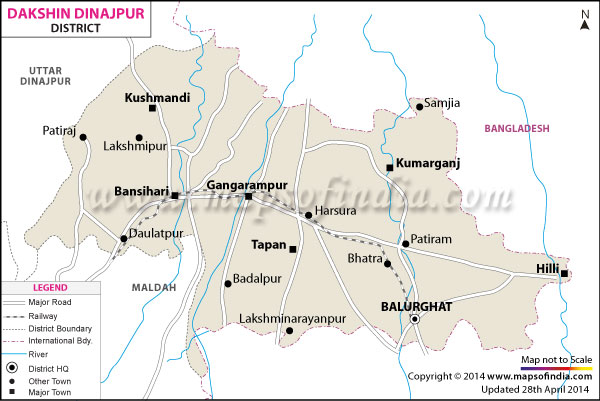Literacy in India is measured by responses recorded in the population enumeration data of the Census of India, conducted once in a decade. For this, any person above the age of 7 who can read and write with understanding in any language is considered literate.
Literacy reflects socio-economic and cultural setup of a nation. Literacy is not only necessary for eradication of poverty but also for mental isolation for free play of demographic processes.
When the British rule ended in India in the year 1947 the literacy rate was just 12%. Over the years, India has changed socially, economically, and globally. After the 2011 census, literacy rate India 2011 was found to be 74.04%. ( male 84% and female 65%)

 Reason for Variation of Literacy Rate:
Reason for Variation of Literacy Rate:
As per the census 2011 the literacy rate of Kerala is 94% and on the other hand literacy of Bihar is 61.8%. This huge difference among these two states is due to following socio-economic causes
1.
Type of economy : differences in levels of industrial and agricultural states correlates to education. In non-agricultural economy literacy is a functional prerequisite.
2.
Cost of education: cost effects as most poor people cannot afford education
3.
Standard of living : there is a positive correlation between literacy level and standard of living
4.
Political/ideological background : effects the psychology of the family to educate a person.
5.
degree of urbanization: more urbanized states have a better level of literacy while rural have low.
7.
availability of educational institutions: quality and better government institutions give better access to educating masses
8.
public policies: government intervention is a major factor for providing education to masses
9.
degree of development of transport and communication: isolated areas in a state which are provided better transport and communication in states have better access to educational institutions.
10.
prejudices against the female mobility and education : societies and states which do not accord equal status to women suffer from low female literacy rates
11.
religious background: role of religion is quite vital
12.
medium of instruction : mother tongue as a medium of instruction helps better grasping
13.
stage of technological advancement
14.
general value system
The various disparities in literacy rates of the states can be removed by government intervention provided the states have the will and infrastructure to do so.
Universal Elementary Education (UEE):
The role of Universal Elementary Education (UEE) for strengthening the social fabric of democracy through provision of equal opportunities to all has been accepted since the inception of our Republic.With the formulation of NPE, India initiated a wide range of programmes for achieving the goal of UEE through several schematic and programme interventions.
The Sarva Shiksha Abhiyan (SSA) (operational since 2000-2001) is being implemented as India's main programme for universalising elementary education. Its overall goals include universal access and retention, bridging of gender and social category gaps in education and enhancement of learning levels of children. SSA provides for a variety of interventions, including inter alia, opening and construction of new schools, additional teachers, regular teacher in-service training, academic resource support to ensure free textbooks, uniforms and free support for improving learning outcomes.
The Right to Free & Compulsory Education Act 2009 provides a justiciable legal framework that entitles all children between the ages of 6-14 years free and compulsory admission,attendance and completion of elementary education.It provides for children's right to an education of equitable quality, based on principles of equity and non-discrimination.Most importantly,it provides for children's right to an education that is free from fear,stress and anxiety.
Secondary Education
The policy at present is to make secondary education of good quality available, accessible and affordable to all young persons in the age group of 14-18. At present, the following schemes targeted at secondary stage (i.e. class IX to XII) are being implemented in the form of Centrally Sponsored Schemes:
Rashtriya Madhyamik Shiksha Abhiyan (RMSA)
Model Schools Scheme
National Means-cum Merit Scholarship Scheme
National Incentive to Girls
Appointment of Language Teachers
In addition to the above the Central Sector schemes of Kendriya Vidyalaya Sangathan (KVS), Navodaya Vidyalaya Sangathan (NVS), Central Tibetan Schools Administration (CTSA), Indo-Mangolian Schools are being implemented.
Adult Education:
Adult Education aims at extending educational options to those adults, who have lost the opportunity and have crossed the age of formal education, but now feel a need for learning of any type, including literacy, basic education, skill development (Vocational Education) and equivalency. With the objective of promoting adult education, a series of programmes have been introduced since the First Five Year Plan, the most prominent being the National Literacy Mission (NLM), that was launched in 1988 to impart functional literacy to non-literates in the age group of 15-35 years in a time bound manner. By the end of the 10th Plan period, NLM had made 127.45 million persons literate.
To bolster Adult Education and Skill Development, Government of India introduced two schemes, namely
Saakshar Bharat and
Scheme for Support to Voluntary Agencies for Adult Education and Skill Development, during the 11th Plan. Saakshar Bharat, the new variant of earlier NLM, set following goals: to raise literacy rate to 80%, to reduce gender gap to 10% and minimize regional and social disparaties, with focus on Women, SCs, STs, Minorities, other disadvantaged groups. All those districts that had female literacy rate below 50% as per census 2001 including Left Wing Extremism affected districts irrespective of literacy level are being covered under the programme.

























